E-Waste, also known as Waste Electrical and Electronic Equipment (WEEE), is the largest growing municipal waste stream in the US according to the EPA*, and so it is important to ensure that this waste stream is properly disposed of.
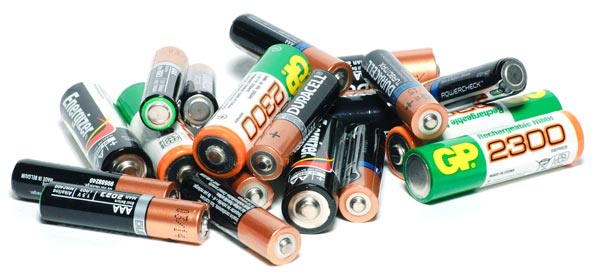
E-waste accounts for just 2-5% of America’s trash in landfills, but is responsible for up to 70% of its toxic waste**. Help to keep your e-waste out of landfills with our helpful ideas for tackling different forms of e-waste:
- Batteries
Batteries often contain heavy metals such as lead or mercury, which, when discarded into landfills, can leach into the ground and cause soil contamination. This can have a knock on effect in terms of wildlife and animal species, as well as humans, due to the possible contamination of crops and plants. 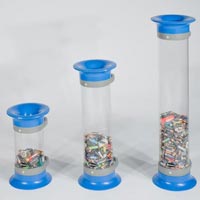
Installing readily accessible battery recycling bins can help to encourage people to dispose of their batteries in a more eco-friendly manner. Our C-Thru™ Battery Recycle Bins are designed with a clear casing to allow the contents to be seen and help minimize cross-contamination. These battery collection tubes are also available in a variety of sizes to suit any location.
Alternatively, using rechargeable batteries instead of multiple disposable items can also be a great way of reducing your WEEE and stopping excess waste from going to landfill.
- Ink/Printer Cartridges
Ink and toner cartridges are another common form of e-waste that can be easily avoided.
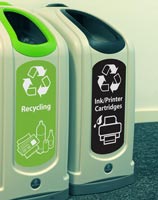
Instead of disposing of your empty cartridges and replacing them with new ones, why not just refill them? Printer cartridges can be reused up to 5 times and can help to save costs as well as landfill space.
Once you are ready to dispose of your empty cartridges, place them in an ink and toner cartridge recycling bin instead of in the trash.
Recycling used cartridges can help to conserve natural resources such as water and oil and will help to reduce landfill waste. The Nexus® 13G Ink/Printer Cartridges Recycling Bin is a great choice due to its sizeable capacity and slim design to fit into all interior environments.
- Cell Phones
Cell phones, including smart phones, have been found to be the most commonly owned device in the US with roughly 92% of adults being in possession of at least one cell phone***. It is therefore essential that these devices are disposed of correctly.
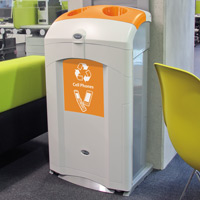
With technology ever changing it is not uncommon for cell phones to be upgraded or replaced with the latest model. But if an old cell is still in good working order, why not donate it?
Donating electronics can not only benefit the environment by saving them from landfills, but can also contribute to helping those who may not be able to afford to buy them on their own. Many charities accept donated electronics as long as they are in full working order. You can view a list of charities in your local area that accept electrical donations, or schedule a charity donation pick up using the Donation Town website.
For broken or unusable cells, dispose of them using a cell phone recycling bin with dedicated apertures and graphics such as the contemporary designed Nexus® 26G Cell Phone Recycling Bin.
- Computers and other electronics
On average, the current computer industry brings new technologies and upgrades to the market every 18 months, meaning that the average life span of a personal computer has shrunk to a mere two years as opposed to its former four or five**.
The fast-growing surplus of new technologies means unwanted, but often fully working, electronics are frequently sent to landfill. Resist upgrading products that do not need replacing in order to minimize e-waste levels.
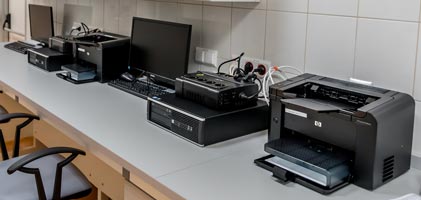
Repurposing fully functioning electronics such as computers and television displays, which individually contain an average of 4 to 8 pounds of lead**, can help to reduce toxic pollution by diverting them from landfill.
For large electronic items such as computers, refrigerators and stereos that are no longer usable, you can host or attend e-waste recycling events in order to dispose of the waste correctly.
Top tips to remember to help to reduce e-waste:
Provide dedicated e-waste recycling bins to dispose of WEEE
Glasdon offer a range of e-waste recycling bins with recognizable labels to suit your needs
Reuse or donate electronics wherever possible
Give your old electronics to friends, family or charities to help those in need
Raise awareness on the importance of e-waste recycling
Create posters or schedule newsletters to spread the word on recycling e-waste
Resist upgrading products that do not need replacing
‘If it’s not broke, don’t fix It’
Attend or host e-waste recycling events
Use a certified e-waste recycler where necessary
Email us inquiries@glasdon.com | Call us Toll Free: 1-855-874-5273 | LiveChat with us on our website
Sources:




